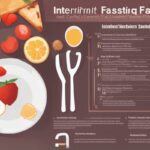As we age, maintaining health and vitality becomes a top priority. For many seniors, exploring dietary strategies like fasting has gained attention as a potential way to boost wellness, manage weight, and even slow the aging process. Fasting for seniors isn’t just a trend—it’s a practice rooted in science and history, with growing evidence suggesting it could offer unique benefits for older adults. But is it safe? How should seniors approach fasting without risking their health? In this comprehensive guide, I’ll walk you through the ins and outs of fasting for the elderly, blending scientific insights with practical advice to help you or your loved ones make informed decisions. Let’s dive into how intermittent fasting and other fasting methods can fit into a senior’s lifestyle.
What Is Fasting, and Why Should Seniors Consider It?
Fasting, at its core, is the voluntary abstention from food and sometimes drink for a specific period. It’s not a new concept—humans have practiced fasting for centuries, often for religious or cultural reasons. Today, modern fasting methods like intermittent fasting (IF), where you cycle between eating and fasting periods, have become popular for health reasons. For seniors, fasting isn’t about extreme deprivation but rather a structured way to give the body a break from constant digestion, potentially triggering benefits like improved metabolic health and reduced inflammation.
Research suggests that fasting can activate cellular processes like autophagy, where the body cleans out damaged cells and regenerates new ones, which may be particularly beneficial for aging bodies (Mattson et al., 2017). Additionally, fasting has been linked to better blood sugar control and reduced risk of chronic diseases—common concerns for older adults (Patterson & Sears, 2017). But while the idea of fasting seniors adopting this practice sounds promising, it’s not a one-size-fits-all solution. Let’s explore the specific benefits and challenges for this age group.
Key Benefits of Fasting for Older Adults
Fasting offers several potential advantages for seniors, especially when tailored to their unique needs. It’s not just about weight loss—though that can be a perk—but also about supporting overall health in ways that align with aging gracefully. Here are some scientifically backed benefits that make fasting for seniors worth considering:
- Improved Metabolic Health: Intermittent fasting can help regulate blood sugar levels and improve insulin sensitivity, which is crucial for seniors at risk of type 2 diabetes (Barnard et al., 2019).
- Reduced Inflammation: Chronic inflammation is a driver of many age-related diseases. Fasting may lower inflammatory markers, supporting joint health and reducing disease risk (Johnson et al., 2007).
- Brain Health Support: Some studies indicate that fasting could protect against cognitive decline by promoting brain-derived neurotrophic factor (BDNF), a protein linked to brain health (Mattson et al., 2017).
- Weight Management: As metabolism slows with age, maintaining a healthy weight gets tougher. Fasting can create a calorie deficit without the need for restrictive diets, aiding weight control.
These benefits sound exciting, but they come with a caveat: seniors must approach fasting cautiously. The aging body has different nutritional and energy needs compared to younger adults, so personalization is key.
Potential Risks and Challenges of Fasting for Seniors
While fasting can be a powerful tool, it’s not without risks, especially for older adults. The body’s resilience to stress, including the stress of not eating, decreases with age. For fasting seniors, certain health conditions and lifestyle factors can make fasting tricky or even dangerous if not done correctly. Here are some challenges to keep in mind:
- Nutrient Deficiency: Seniors are already at risk for deficiencies in key nutrients like vitamin D, B12, and protein. Prolonged fasting without proper planning can worsen this (Institute of Medicine, 2005).
- Muscle Loss: Aging naturally leads to sarcopenia (muscle loss). Fasting, if not paired with adequate protein intake, might accelerate this process.
- Medication Interactions: Many seniors take medications that require food for absorption or to avoid stomach irritation. Fasting schedules must account for this.
- Dehydration Risk: Older adults often don’t sense thirst as acutely, and fasting (especially if fluids are restricted) can increase dehydration risks.
- Dizziness or Fatigue: Low blood sugar or electrolyte imbalances during fasting can cause dizziness, increasing fall risks—a major concern for seniors.
These risks don’t mean fasting is off the table for the elderly, but they do highlight the importance of consulting a healthcare provider before starting. A doctor or dietitian can help tailor a fasting plan that minimizes these concerns while maximizing benefits.
How Seniors Can Start Fasting Safely
If you’re a senior curious about fasting, or you’re helping a loved one explore it, the key is to start slow and stay informed. Fasting for seniors doesn’t have to mean long, intense fasts. In fact, shorter, gentler approaches like time-restricted eating (limiting food intake to an 8–10 hour window daily) can be a great entry point. Here’s how to get started safely:
First, always get medical clearance. Your doctor knows your health history, medications, and any conditions that might make fasting unsafe. Once you’ve got the green light, choose a fasting method that feels manageable. Intermittent fasting for older adults often works best with a 16:8 schedule (fast for 16 hours, eat during an 8-hour window) or even a 14:10 split for beginners. Focus on nutrient-dense foods during eating periods to ensure you’re not missing out on vitamins, minerals, and protein.
Hydration is non-negotiable. Even during fasting hours, drink water, herbal tea, or black coffee (if tolerated) to stay hydrated. Finally, listen to your body. If you feel weak, dizzy, or unwell, stop fasting and reassess with your healthcare team. Fasting should feel sustainable, not punishing.
Practical Tips for Successful Fasting in Later Years
Navigating fasting as a senior doesn’t have to be complicated. With a few tweaks, you can make intermittent fasting for seniors a seamless part of your routine. I’ve put together some actionable tips based on both research and real-world experiences to help you succeed:
Start by aligning your fasting window with your natural rhythm. If you’re an early riser, consider eating between 10 a.m. and 6 p.m., skipping late-night snacks. This can also improve sleep quality, which is often a struggle for older adults. During eating windows, prioritize balanced meals—think lean proteins, healthy fats like avocado or nuts, and plenty of vegetables to support overall nutrition. Don’t skimp on calories just because you’re fasting; aim to meet your energy needs in a shorter time frame.
Another tip is to ease into it. Don’t jump into a 24-hour fast right away. Begin with a 12-hour overnight fast (basically, no eating after dinner until breakfast) and gradually extend the fasting period as you feel comfortable. And remember, fasting doesn’t mean starving—if hunger becomes unbearable, it’s okay to break the fast with a small, healthy snack. The goal is consistency, not perfection.
Who Should Avoid Fasting Altogether?
While many seniors can benefit from fasting with proper guidance, it’s not for everyone. Certain health conditions and circumstances make fasting for the elderly risky or inappropriate. If you or a loved one falls into any of these categories, it’s best to steer clear or seek alternative health strategies:
Those with a history of eating disorders should avoid fasting, as it can trigger unhealthy behaviors. Seniors with uncontrolled diabetes or hypoglycemia need to be especially cautious, as fasting can cause dangerous blood sugar fluctuations (American Diabetes Association, 2020). Additionally, if you’re underweight, have a history of malnutrition, or are recovering from surgery or illness, fasting could hinder recovery by limiting nutrient intake. Always prioritize safety over trends—there are plenty of other ways to support health without fasting.
In conclusion, fasting for seniors holds promising potential as a tool for improving metabolic health, reducing inflammation, and supporting brain function in later years. However, it’s not a magic bullet, and it comes with unique considerations for older adults. By starting slowly, prioritizing nutrition and hydration, and working closely with healthcare providers, seniors can explore intermittent fasting or other fasting methods safely. Aging gracefully is all about balance—fasting might be one piece of the puzzle, but it’s most effective when paired with a holistic approach to wellness. Have you or a loved one tried fasting? I’d love to hear your experiences or questions in the comments below. Let’s keep this conversation going as we navigate health together in our golden years.
References
- American Diabetes Association. (2020). Standards of Medical Care in Diabetes—2020. Diabetes Care, 43(Supplement 1), S1-S212.
- Barnard, N. D., Goldman, D. M., Loomis, J. F., et al. (2019). Plant-based diets for reversing disease and improving metabolic health. Frontiers in Nutrition, 6, 96.
- Institute of Medicine. (2005). Dietary Reference Intakes for Energy, Carbohydrate, Fiber, Fat, Fatty Acids, Cholesterol, Protein, and Amino Acids. National Academies Press.
- Johnson, J. B., Summer, W., Cutler, R. G., et al. (2007). Alternate day calorie restriction improves clinical findings and reduces markers of oxidative stress and inflammation. Free Radical Biology and Medicine, 42(5), 665-674.
- Mattson, M. P., Longo, V. D., & Harvie, M. (2017). Impact of intermittent fasting on health and disease processes. Ageing Research Reviews, 39, 46-58.
- Patterson, R. E., & Sears, D. D. (2017). Metabolic effects of intermittent fasting. Annual Review of Nutrition, 37, 371-393.






